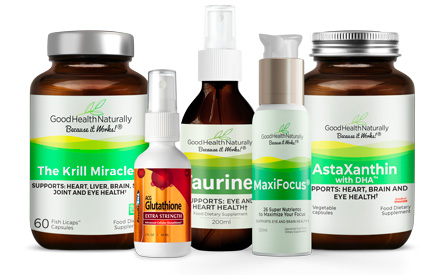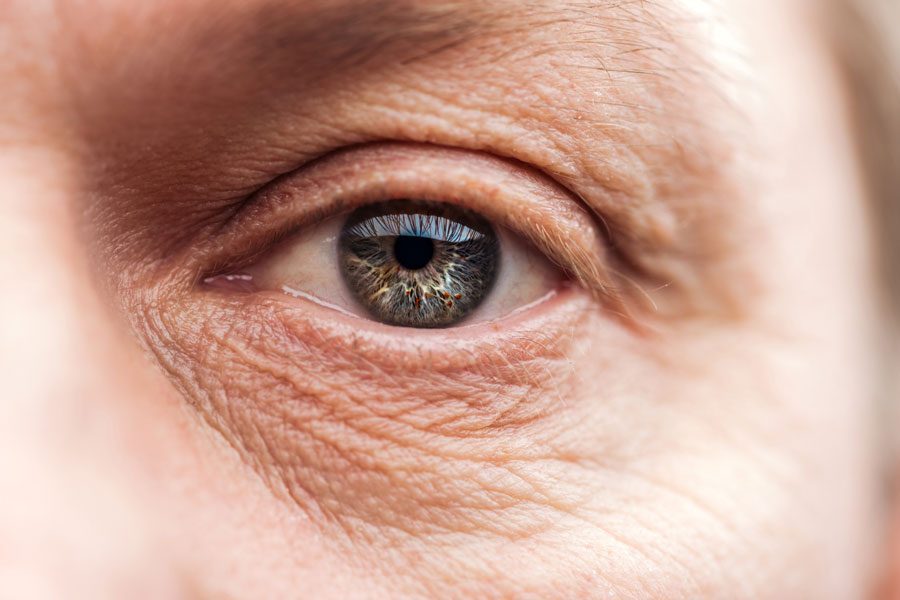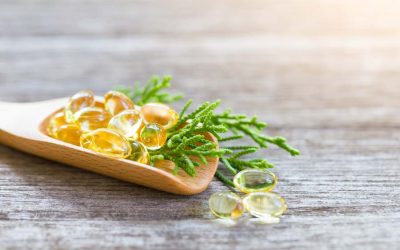How is your eye health? This week we want to look deeper at eye diseases that can primarily occur as we age.
This topic was sparked by a new campaign with actor Henry Winkler – notable for his role as the ‘Fonzie’ in the ‘Happy Days’ T.V. sitcom from the 1970s.
Henry Winkler has raised awareness about geographic atrophy (G.A.), an advanced form of age-related macular degeneration (AMD) which is a leading cause of blindness worldwide.
Mr Winkler has personally seen how vision loss caused by AMD has affected him as an individual and the impact this has had on his loved ones. His father-in-law Ed, with whom he also shared a close relationship, was also diagnosed with AMD, causing him to lose his central vision and, ultimately, his independence.
As his father’s vision loss progressed, Winkler recognised that aspects of his father-in-law’s everyday life became increasingly difficult. He had to stop his career in dentistry, and eventually, even simple tasks like pouring a glass of water became difficult.
What is Geographic Atrophy?
This chronic progressive degeneration of the macula can be seen as part of late-stage age-related macular degeneration (AMD).
Symptoms of Geographic Atrophy include:
- Difficulty reading in dim lighting situations
- Central vision loss
- Black spots in your central vision
- Slower reading speed
- Glare
- No change in peripheral vision
The main reason why Geographic Atrophy occurs is that our eyes need healthy photoreceptor cells (rods and cones) to gather incoming light and transmit images to the brain.
In late-stage dry AMD, protein deposits (drusen) forming on the macula (the central part of the retina) clump on the photoreceptor cells, and this causes them to die.
When the photoreceptor cells are lost, central vision is lost. This is a slow process that also begins to affect the visual cells in the retina.
People at risk of Geographic Atrophy are usually older (as it’s frequently found in people in their 70s and 80s) with a history of smoking and high blood pressure. Along with genetics, it’s thought that people with a light-coloured iris may be more at risk.
The Way of Good Eye Health
Despite the mainstream media claiming there is no treatment for Geographic Atrophy, there are ways to follow a healthy diet and lifestyle that can help to support good eye health.
In the long-term, this can help to reduce the risk of developing eye conditions such as Age-Related Macular Degeneration (ARMD), Geographic Atrophy and more.
Your eye doctor may not also tell you that your condition is caused by, or worsened by, malnutrition and nutritional deficiencies.
You can protect your vision for long-term good eye health by getting the proper nutrients.
However, many of us don’t get enough nutrients to protect our eyes daily. Even worse, your body may not be prepared to absorb these nutrients when you eat them because of factors such as age and inflammation caused by an unnatural diet. Soil depletion and modern food processing methods may also play a role in developing nutritional deficiencies.
Research also confirms that the average 70-year-old has only 20 per cent of the beneficial enzymes needed for digestion compared to a 20-year-old – so supplementing the missing nutrients is essential.
The scary part about ARMD is that there are no signs or symptoms in the beginning stages of this eye disease. This is why taking protective measures can be so beneficial in reducing its progression.
Foods and nutrients that decrease the risk of ARMD include:
- Eating fruits and vegetables – significantly those rich in beta-carotene – Can cut late ARMD risk by 60 per cent with just one serving of oranges daily, as they are rich in beta-carotene and Vitamin C.
- Primary carotenoids Lutein and Zeaxanthin offer over 40 per cent decreased risk of eye disease, with collard greens and spinach providing the most protection.
- Vitamins C, E and Zinc – Can better protect the integrity and function of blood vessels in the eyes as essential antioxidants, particularly beneficial for sufferers of wet AMD.
Research shows that diet and food intake significantly influence eye health and may decrease the risk of ARMD. [1] However, many of us can’t get enough of these vital nutrients from food alone. That’s why choosing to supplement is essential for supporting eye health.
Lutein
A study of 4,519 people found that taking a Lutein supplement at higher levels could lower the risk of ARMD. Lutein and Zeaxanthin are yellow plant pigments, and our body needs a daily dose to combat the effects of age. [2]
Lutein declines as we get older, and this steady drop can start to affect the eyes – and the brain. American researchers also discovered in 2017 that higher Lutein levels mean more alert neurons that function like a younger brain. [3]
Zeaxanthin
As a potent carotenoid antioxidant, Zeaxanthin works with Lutein to protect the macula from free radical damage often associated with ARMD. As confirmed by Dr Yeum in 1995, Zeaxanthin and Lutein are the only two carotenoid antioxidants found in the eye lens and retina. [4]
Researchers reported that consuming 6mg of Lutein and co-nutrient Zeaxanthin daily for five months helped significantly increase macular pigment density, which can protect against harmful blue wavelength light that may be most responsible for Macular Degeneration.
Most of the time, Lutein and Zeaxanthin levels in food are paired together, but Zeaxanthin is much harder to get from diet. We may only get 10 per cent of the vital Lutein and Zeaxanthin our eyes need from our food – a far cry from the 10mg of Lutein and 2 mg of Zeaxanthin required daily for healthy vision.
Astaxanthin
The red-carotenoid pigment Astaxanthin, which gives crustaceans their colour, is 65 times more potent than Vitamin C. What’s more, Astaxanthin is renowned among researchers as a primary supporter of eye health — it is one of the few protective antioxidants able to penetrate the retinal barrier. [5]
Astaxanthin supplementation may relieve macular degeneration and other eye diseases; researchers also noted that the antioxidant accumulated in eye tissue when fed to test subjects.
Taking a high dose of this potent daily antioxidant can support healthy vision by minimising eye strain, fatigue, and disease. Astaxanthin can also boost our overall anti-ageing ability by switching on our “longevity gene” by nearly 90 per cent.
Taurine
Based on research published in the Alternative Medicine Review, Retinitis Pigmentosa sufferers may have faulty cellular uptake of the most prolific amino acid in the eye; Taurine. R.P. patients may also have disturbed vitamin A utilisation and could therefore benefit from taking a vitamin A supplement.
We may all need more Taurine at any age. Taurine deficiency has also been linked to retinal problems in children, like retinal ganglion cell degeneration and retinal dysfunction.
Glutathione
Research shows a strong connection between Glutathione and preventing Cataracts, Diabetic Retinopathy, Retinitis Pigmentosa and ARMD. Like Curcumin, Liposomal Glutathione is a more bioavailable form the body can use for protection against this eye disease.
Studies have shown that Glutathione detoxifies the inner eye’s aqueous fluid and may help maintain adequate fluid outflow among glaucoma patients. [6]
Krill Oil
As a concentrated source of Omega-3 fatty acids, Krill Oil can stabilise blood sugar levels and protect cell membranes, amongst other health benefits.
Recent research has also found that Krill Oil phospholipids benefit dry eyes and may even help slow severe vision loss, primarily AMD, in older people. [7]
Superba Boost Krill Oil is rich in marine phospholipids, Omega-3 EPA and DHA, Choline and Astaxanthin. Phospholipid Omega-3’s and Astaxanthin are essential in modulating and shortening inflammatory reactions.
Superba Boost Krill Oil works from the inside out to provide nutritional support and comfort for dry eyes by promoting healthy tear production and stability. It’s also an efficient nutritional strategy to combat dry eye symptoms such as inflammation, irritation and redness.
References:
[1] https://pubmed.ncbi.nlm.nih.gov/29927057/
[2] https://www.ncbi.nlm.nih.gov/pmc/articles/PMC1470467/
[3] https://www.frontiersin.org/articles/10.3389/fnagi.2017.00254/full
[4] https://www.ncbi.nlm.nih.gov/pmc/articles/PMC4706936/
[5] https://www.ncbi.nlm.nih.gov/pmc/articles/PMC7281326/
[6] https://www.ncbi.nlm.nih.gov/pmc/articles/PMC5359059/
[7] https://www.dailymail.co.uk/health/article-11908715/
Remember, protecting your eye health and reducing your risk of eye disease begins with taking the proper nutrients and following a healthy lifestyle. We recommend looking at the nutrients and reading the Eye Health book below for the best results.
Recommended Reading
Helping Eye Disease, By The Book
Recommended Examples from our sponsor,
Good Health Naturally

MaxiFocus® Sublingual Liposomal
Delivers a complete spectrum of eye nutrients, including the carotenoids Lutein and Zeaxanthin. It is recommended for optimal eye health support. Suitable for vegetarians and vegans.
AstaXanthin with DHA™
AstaREAL Astaxanthin is the richest and most natural source of Astaxanthin. It provides antioxidant benefits that may help to protect the skin from U.V. radiation and anti-inflammatory support for heart, brain and eye health. Suitable for Vegetarians and Vegans. 90 capsules.
Taurine™ Spray
Contains L-Taurine, an amino acid that could benefit brain, muscle and eye health. 60ml/ 2 fl. oz.
Advanced Cellular Glutathione® Extra Strength
A leading evidence-based Glutathione Supplement Spray. A.C.G. has been proven by independent clinical research to effectively increase intracellular levels of G.S.H. by over 10% in only 7 hours.
The Krill Miracle™
Ultra-pure omega fatty acids to promote wellness and longevity. It contains high-strength DHA/EPA, supporting anti-inflammatory processes, including eye health. 60 Fish Licaps™ capsules.





